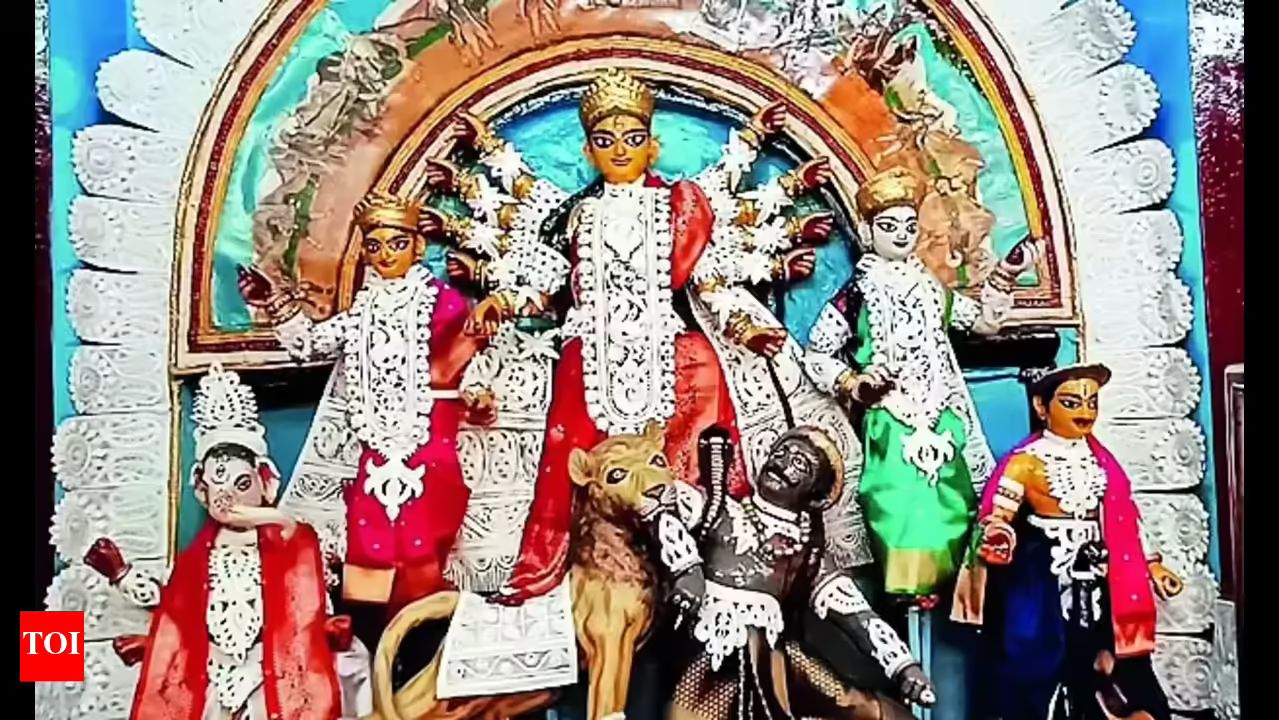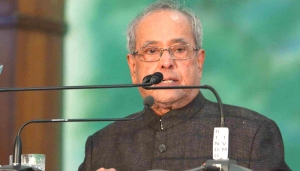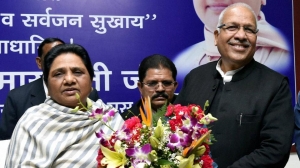Varanasi’s 260-Year-Old Durga Idol Defies Tradition

Varanasi, Sept 28, 2025 — In Varanasi’s Madanpura, Durga Puja celebrations carry a story unlike any other in India. Here, a single clay idol of Goddess Durga has remained in the same spot for almost 260 years, defying the usual ritual of immersion during Vijayadashami. The legend traces back to 1767, when the Mukhopadhyay family, then settled in Varanasi after migrating from Hooghly in Bengal, attempted to take the ek-chala (single-roofed) Durga idol to the Ganges for immersion. Despite the combined strength of 15 burly milkmen, the idol refused to budge. Exhausted and bewildered, the family interpreted this as a divine message. That night, Kali Prasanna Mukhopadhyay, head of the family, dreamt of Durga herself declaring she wished to remain permanently in Kashi. From then on, the idol has stayed at Purana Durga Bati, becoming a symbol of faith, continuity, and devotion. Crafted from Ganga clay mixed with straw, bamboo, and jute strings, the six-foot-tall idol has been worshipped by the Mukhopadhyay family and the local community every year. Alongside Durga, her children—Lakshmi, Saraswati, Ganesha, and Kartik—are venerated, creating an enduring tableau that has survived generations. The rituals, maintained meticulously over centuries, include daily aarti lasting 20 minutes, extending to 45 minutes during the Puja. The deity is offered chola-gur, a mixture of soaked Bengal gram and jaggery, every day of the year, and special offerings like fruits, soaked matar, moong dal, and coconut sweets are prepared during the nine-day festival. The Mukhopadhyay family traces its roots to Hooghly district in West Bengal. Following internal family disputes and loss of property, Kali Prasanna Mukhopadhyay relocated to Varanasi, where Bengalis had long established themselves, giving the city the nickname “Mini-Calcutta.” It was in this new city that the family began their Durga Puja, initially an intimate, family-centric affair, long before the grandeur of modern public celebrations took hold. Over the decades, the family, now known as Mukherjee, preserved the idol and the rituals, passing the responsibility to succeeding generations while maintaining the sanctity and traditions. The Purana Durga Bati has become a site of devotion not just for the family but for locals and visitors from across India. During the festival, the deity is adorned with new clothes, shola ornaments, and fine sarees with rich borders. Artistic contributions have spanned generations; the Dutta family has painted and decorated the idol, sourcing traditional materials like phulshola from Bangladesh in earlier times, though now it is available locally. While the paint on the idol is refreshed lightly every three to four years, the original structure remains intact, testifying to the durability and reverence with which it is treated. The Puja’s unique traditions contrast with the modern practice of creating new clay or fiberglass idols each year. Among the Bengali diaspora, especially in the US, Canada, and Europe, Durga idols crafted in Kolkata’s Kumartuli are often made of lightweight fiberglass and shipped months in advance. These idols are designed to be reused rather than immersed, accommodating logistical challenges and environmental regulations abroad. In Varanasi, however, the Purana Durga Bati idol represents permanence, a rare continuity that embodies the family’s devotion and the goddess’s eternal presence. The legend of the Durga idol refusing to move during Vijayadashami has become an integral part of the city’s cultural and spiritual fabric. Attempts to transport the idol to the Ganges in 1767 failed despite ropes, chants, and the combined might of local milkmen. The following morning, Kali Prasanna informed his family that the goddess had chosen to remain in Kashi. From that moment, immersion was never attempted again, and the idol continues to be worshipped at the same location, drawing devotees and family members from near and far. Today, Purana Durga Bati remains a modest yet profoundly spiritual site, eschewing grand pandals in favor of intimate gatherings of family, friends, and locals. The focus is on devotion, conversation, and community. While the rituals have evolved subtly over centuries, the essence remains the same: daily offerings, ceremonial aarti, and an unbroken tradition of reverence. Celebrities from Tollywood and visitors from across India often join in the festivities, but the core remains rooted in family and faith. In contrast to ephemeral clay idols immersed in rivers each year, the Purana Durga Bati idol stands as a testament to permanence, devotion, and the enduring legacy of faith. For generations, the Mukherjee family has maintained this sacred space, ensuring that Durga continues to reside in her Kashi abode. While stories of the idol refusing to move might seem like legend to outsiders, for the residents of Madanpura, it is a divine mandate that shapes one of India’s oldest continuously celebrated Durga Pujas. Over 258 years later, the same idol is worshipped with love, care, and unwavering devotion, embodying the spiritual heart of Varanasi and the timeless bond between a goddess and her devotees. Varanasi’s 260-Year-Old Durga Idol Defies Tradition In Varanasi’s Madanpura, a Durga idol has been worshipped for nearly 260 years without immersion. Legend says that in 1767, the idol refused to move during Vijayadashami, prompting the Mukhopadhyay family to let it remain permanently in Kashi. Crafted from Ganga clay, straw, bamboo, and jute, the idol, along with her children, is revered daily with rituals, aarti, and offerings like chola-gur. Unlike temporary or fiberglass idols used elsewhere, this Durga represents permanence and devotion. The Purana Durga Bati continues to draw devotees, family members, and visitors from across India, preserving a centuries-old spiritual and cultural legacy




